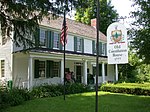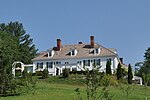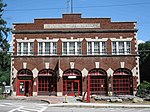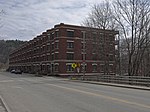Saint-Gaudens National Historical Park
1964 establishments in New HampshireArt museums and galleries in New HampshireArtists' studios in the United StatesBiographical museums in New HampshireCornish, New Hampshire ... and 15 more
Historic districts on the National Register of Historic Places in New HampshireHistoric house museums in New HampshireHouses in Sullivan County, New HampshireHouses on the National Register of Historic Places in New HampshireMcKim, Mead & White buildingsMuseums devoted to one artistMuseums in Sullivan County, New HampshireNational Historic Landmarks in New HampshireNational Historic Sites in New HampshireNational Historical Parks of the United StatesNational Park Service areas in New HampshireNational Register of Historic Places in Sullivan County, New HampshireProtected areas established in 1964Sculptures by Augustus Saint-GaudensUse mdy dates from August 2023
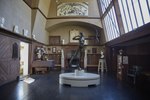
Saint-Gaudens National Historical Park in Cornish, New Hampshire, preserves the home, gardens, and studios of Augustus Saint-Gaudens (1848–1907), one of America's foremost sculptors. The house and grounds of the National Historic Site served as his summer residence from 1885 to 1897, his permanent home from 1900 until his death in 1907, and the center of the Cornish Art Colony. There are three hiking trails that explore the park's natural areas. Original sculptures are on exhibit, along with reproductions of his greatest masterpieces. It is located on Saint-Gaudens Road in Cornish, 0.5 miles (0.80 km) off New Hampshire Route 12A.
Excerpt from the Wikipedia article Saint-Gaudens National Historical Park (License: CC BY-SA 3.0, Authors, Images).Saint-Gaudens National Historical Park
Saint Gaudens Road,
Geographical coordinates (GPS) Address Nearby Places Show on map
Geographical coordinates (GPS)
| Latitude | Longitude |
|---|---|
| N 43.500833333333 ° | E -72.368055555556 ° |
Address
Abraham Lincoln: The Man (Standing Lincoln)
Saint Gaudens Road
03745
New Hampshire, United States
Open on Google Maps



